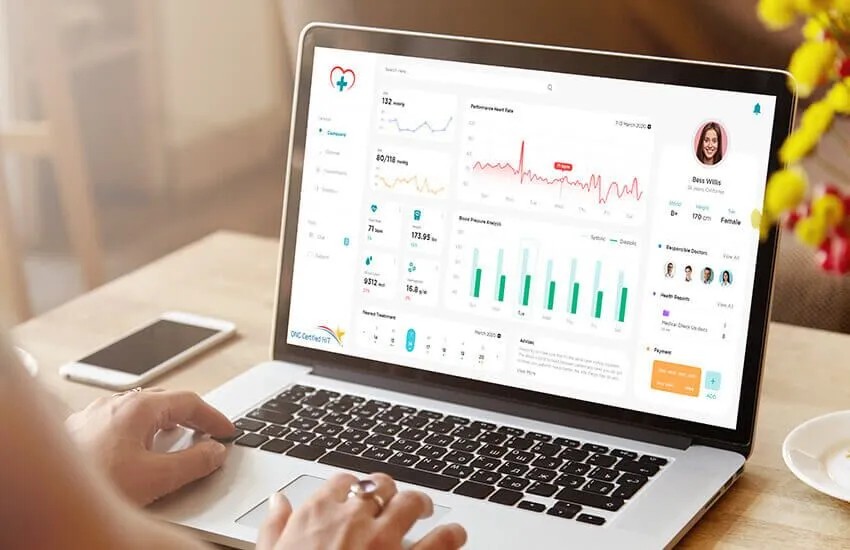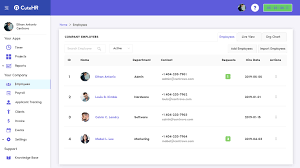Streamlining Patient Care with Urgent Care Electronic Medical Records (EMR)

In today’s fast-paced healthcare environment, efficiency, accuracy, and patient satisfaction are key to delivering exceptional service. Nowhere is this more evident than in urgent care clinics, where speed and precision can make a significant difference. One of the most important technological advancements driving transformation in these settings is the implementation of Urgent Care Electronic Medical Records. These digital systems have revolutionized how urgent care providers document, access, and manage patient data. By eliminating paper-based inefficiencies, urgent care clinics are now able to offer higher-quality care in less time.
The Role of EMRs in Modern Urgent Care
Urgent care centers operate under unique pressure compared to traditional clinics. With high patient turnover and varied conditions ranging from colds to minor fractures, providers must act quickly and accurately. This is where Urgent Care Electronic Medical Records systems step in. Unlike traditional documentation methods, EMRs provide real-time access to a patient’s history, prescriptions, allergies, and lab results, all at the click of a button. This accessibility ensures faster diagnoses, better treatment decisions, and smoother care coordination, even when time is limited.
Streamlining Workflow for Medical Teams
Efficiency is everything in an urgent care clinic. With a continuous stream of walk-in patients and urgent health concerns, the medical staff must work quickly and seamlessly. Urgent Care Electronic Medical Records streamline workflow by automating repetitive tasks, simplifying documentation, and allowing staff to focus more on patient care and less on administrative duties. Scheduling, billing, charting, and prescriptions can all be handled within the same system, cutting down on errors and saving valuable time. This ultimately reduces wait times, improves patient satisfaction, and helps maintain a consistent flow of operations.
Enhancing Patient Safety and Clinical Accuracy
Patient safety is a top priority, and EMRs play a pivotal role in ensuring it. With Urgent Care Electronic Medical Records, providers can instantly review a patient’s history and spot critical information like drug allergies, past treatments, or chronic conditions. This reduces the risk of errors that could occur from incomplete records or miscommunication. Additionally, EMRs use decision support tools that alert providers to potential medication conflicts or abnormal lab values. These safeguards ensure higher clinical accuracy, improving the overall quality of care delivered at urgent care facilities.
Improving Documentation and Legal Compliance
In any healthcare setting, proper documentation is vital. It not only supports clinical decisions but also protects against legal liabilities. Urgent Care Electronic Medical Records provide time-stamped, legible, and comprehensive documentation that meets current regulatory standards. This reduces the risk of malpractice claims and supports compliance with laws such as HIPAA. With built-in security features, audit trails, and encryption, EMRs offer peace of mind for both providers and patients regarding the protection of sensitive health information.
Faster Lab Integration and Test Results
Time is of the essence in urgent care. Whether it’s a strep test, COVID-19 swab, or X-ray, rapid access to diagnostic results helps speed up treatment decisions. Urgent Care Electronic Medical Records systems are designed to integrate with labs and imaging centers, allowing results to flow directly into the patient’s chart. This eliminates delays, lost paperwork, and repeated tests. Physicians can review lab results immediately and discuss them with patients in real-time, leading to faster interventions and more satisfied patients.
Enabling Better Continuity of Care
One of the challenges of urgent care is the lack of long-term patient relationships. Many patients are seen once and don’t return. However, continuity of care remains essential, especially when patients need follow-up treatment. Urgent Care Electronic Medical Records help bridge this gap by maintaining a centralized, accessible health record that can be shared with other providers or specialists. This ensures that patients receive consistent care even after leaving the urgent care facility. With electronic referral capabilities, patients can be smoothly transitioned to other providers, supporting a more integrated healthcare experience.
Data Analytics and Reporting for Clinic Performance
Urgent care centers are also businesses that must monitor performance, patient volume, revenue, and clinical outcomes. Urgent Care Electronic Medical Records come equipped with data analytics tools that generate reports on key metrics like patient wait times, visit reasons, billing efficiency, and treatment success rates. Administrators can use this data to identify inefficiencies, forecast staffing needs, and improve service delivery. By leveraging these insights, clinics can not only provide better care but also improve operational sustainability and financial health.
Mobile Access and Telemedicine Integration
The modern patient expects digital convenience, and healthcare providers are meeting that demand through mobile-friendly EMRs. Urgent Care Electronic Medical Records systems often offer provider portals, mobile apps, and telemedicine integrations that allow physicians to access records remotely, provide consultations online, or communicate securely with patients. This technology enhances flexibility, enabling clinics to offer virtual urgent care services. Patients appreciate the convenience, and providers benefit from greater reach and improved care continuity—even outside clinic walls.
Customization for Urgent Care Workflows
Generic EMR systems may not always fit the unique workflow of urgent care centers. That’s why many vendors now offer customized Urgent Care Electronic Medical Records tailored specifically for high-volume, fast-paced environments. These systems include features like pre-loaded templates for common urgent care conditions, streamlined triage processes, and built-in e-prescribing. The goal is to minimize clicks, reduce redundant data entry, and support quick decision-making. Clinics that use specialized EMRs often see improvements in efficiency, provider satisfaction, and patient throughput.
Challenges and Considerations in EMR Implementation
Despite the many benefits, transitioning to Urgent Care Electronic Medical Records is not without challenges. Implementation requires training, change management, and initial financial investment. There may be temporary slowdowns as staff adjust to new systems. It’s crucial to select an EMR that aligns with your clinic’s size, patient volume, and specific needs. Partnering with an experienced vendor that offers onboarding support, regular updates, and responsive customer service is essential for long-term success. With the right planning, most clinics find that the benefits far outweigh the short-term hurdles.
Conclusion
The landscape of urgent care is evolving rapidly, and staying competitive means embracing technology that supports fast, accurate, and patient-centered care. Urgent Care Electronic Medical Records are no longer optional—they are a necessity for clinics aiming to deliver top-tier healthcare efficiently. From streamlining workflows and enhancing documentation to improving patient outcomes and legal compliance, EMRs provide urgent care centers with the tools needed to thrive in a digital world. As the demand for accessible healthcare continues to grow, clinics equipped with the right EMR systems will lead the way in delivering safe, timely, and efficient care.




